Art World
These Artists Find Fertile Soil in Tending Gardens as Artworks
From lush greenery to austere rock conglomerations, in these artists' hands, gardens are an extension of the creative practice.
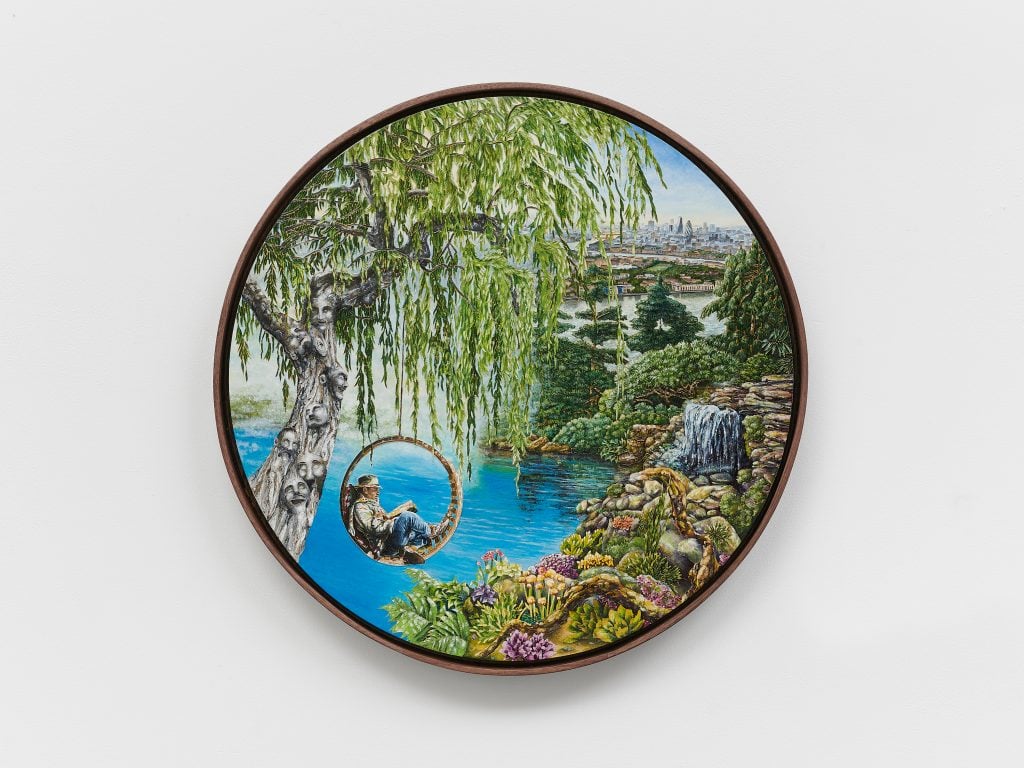
Plants are an enduring subject for artists, whether painting and drawing them, sculpting them in lasting materials, or bringing actual foliage into gallery spaces. But some fully immerse themselves, creating permanent gardens as living artworks. Many artists’ gardens explore conceptual themes that are present in their wider practices, from environmental collapse to poetry, escapism and self-expression.
These artists turn the idea of the garden as something quaint on its head, pushing the scientific or conceptual limits of their tended plots of land. In their hands, plants become not just a subject, but form and material in and of themselves. They are continuations of rich artistic practices, celebrating the intertwined nature of human creativity and the land it springs from.
Ian Hamilton Finlay
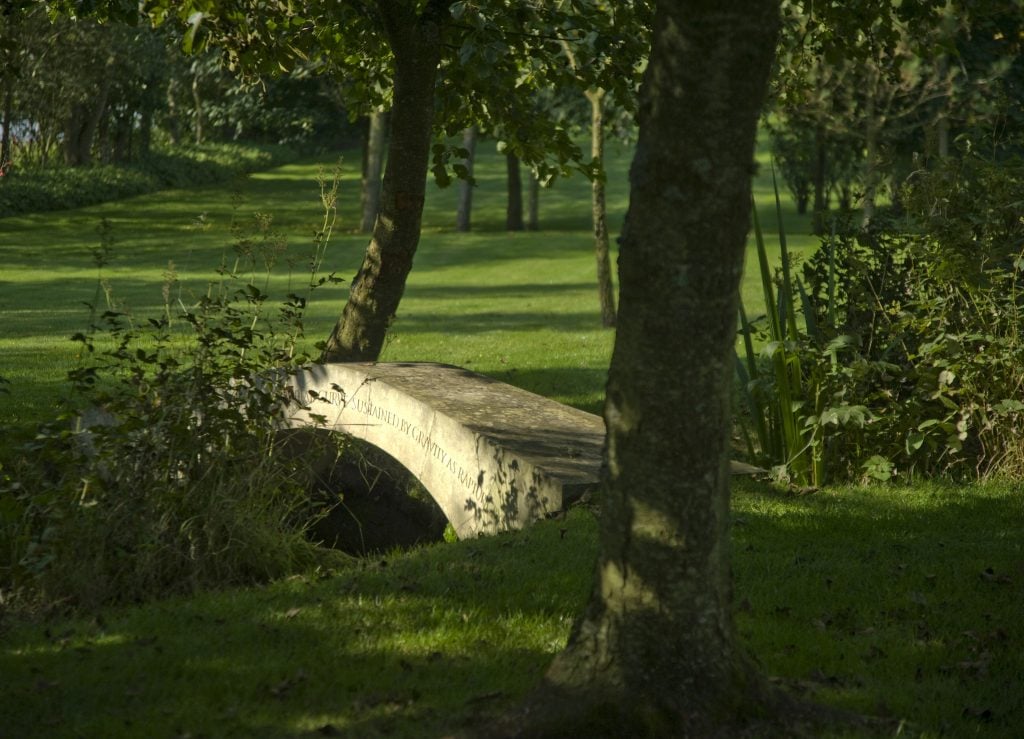
Ian Hamilton Finlay, Little Sparta. Photo by Robin Gillanders.
Begun in 1966, Ian Hamilton Finlay’s Little Sparta sits in South Lanarkshire, Scotland and is a thought-provoking extension of the artist and poet’s practice, with beautiful plants offset by political provocations. It is inspired by everything from traditional English gardens to the French Revolution, which Finlay saw as the ultimate challenge to received ideas.
The garden, its name a play on the nickname of nearby Edinburgh, “The Athens of the North,” is intended as an act of aggression. “He liked to say that if you rearrange the letters, garden becomes danger,” said Magnus Linklater, who has served as chairman for the trust that maintains the park since 2001. “The poetry is an essential part of it. Ian started off as a concrete poet, in which the physical shape of the poem is as important as the words themselves. And that then translated into words on stone. His early artworks were very often objects that contained phrases or poetry in some form or other. That developed into the creation of a garden carved into bare hill, with the help of his wife Sue. She was interested in plants, trees, bushes and shrubs; Ian was interested in the garden as a work of art it itself.”
Managing an artist’s estate is challenging under any circumstances, but when part of that estate is a living garden, it can be difficult to remain true to the artist’s intentions. When any plant is taken out by the wind, or becomes victim to flooding, the team carefully logs the changes. “We are tasked with maintaining the garden in the style, manner and ethos in which Ian created it,” said Linklater. “He was adamant that he didn’t want any works introduced from outside, and his some 300 works in the garden remain. But around them, trees grow; blow over; have to be replaced. It is a very different place from when it first started as much more of a flower garden. Over time it has become more of a tree garden, darker than it was originally.”
Since its creation, Little Sparta has considered human impact on the land. A group meets quarterly, reporting on the garden’s biodiversity and benefits to the surrounding wildlife. “We are very wedded to the idea that this is part of nature,” said Linklater. “Ian himself said if at any stage this garden could no longer be supported, what he would like to see is that it melts back into the hills from which it came.”
Danh Vo
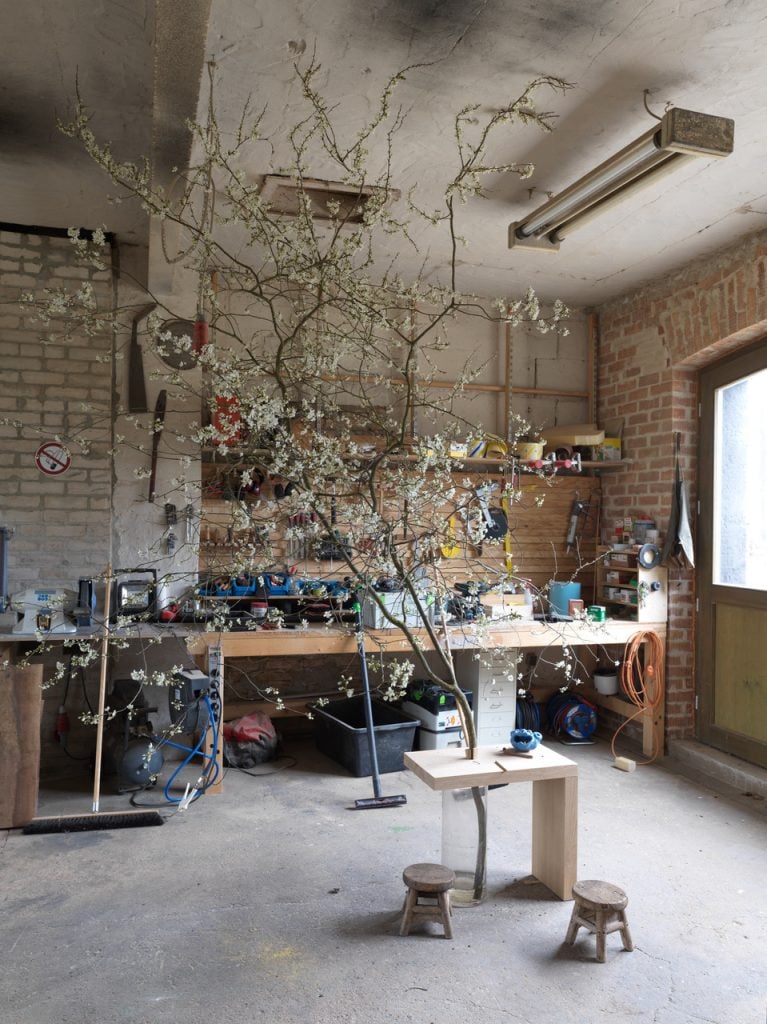
Danh Vo, Studio Danh Vo, Güldenhof. Courtesy of the artist studio. Photo by Nick Ash.
In 2021, Vietnamese-Danish artist Danh Vo also dedicated himself to environmental exploration through artistic gardening. His permanent installation Station Haven is situated on a small plot of land near the Nivå train station in Denmark and will be worked on over the next decade with a local museum, the Nivaagaard Collection. The project is scientifically rooted, exploring topics such as biodiversity in collaboration with Carsten Rahbek, a University of Copenhagen professor in that field. As part of the project, Vo invites the local community to meditate on the ever-evolving garden.
This is in keeping with the artist’s eco-conscious practice. His home and studio are situated on the site of a former agricultural collective near Berlin, with lush vines planted throughout one of its abandoned buildings and fellow artists collaborating on site, whether through beekeeping or sauerkraut making. There is also an annual summer solstice event. “Having a garden teaches you patience,” Vo said in a 2021 interview. “It is good to watch things change over time. My exhibitions live for a limited time. When they come apart they disappear. Plants, on the other hand, keep growing and changing. The lockdown gave me a chance to notice the seasons. It had been 10 years since, travelling all over the world, I had witnessed this phenomenon.”
Raqib Shaw
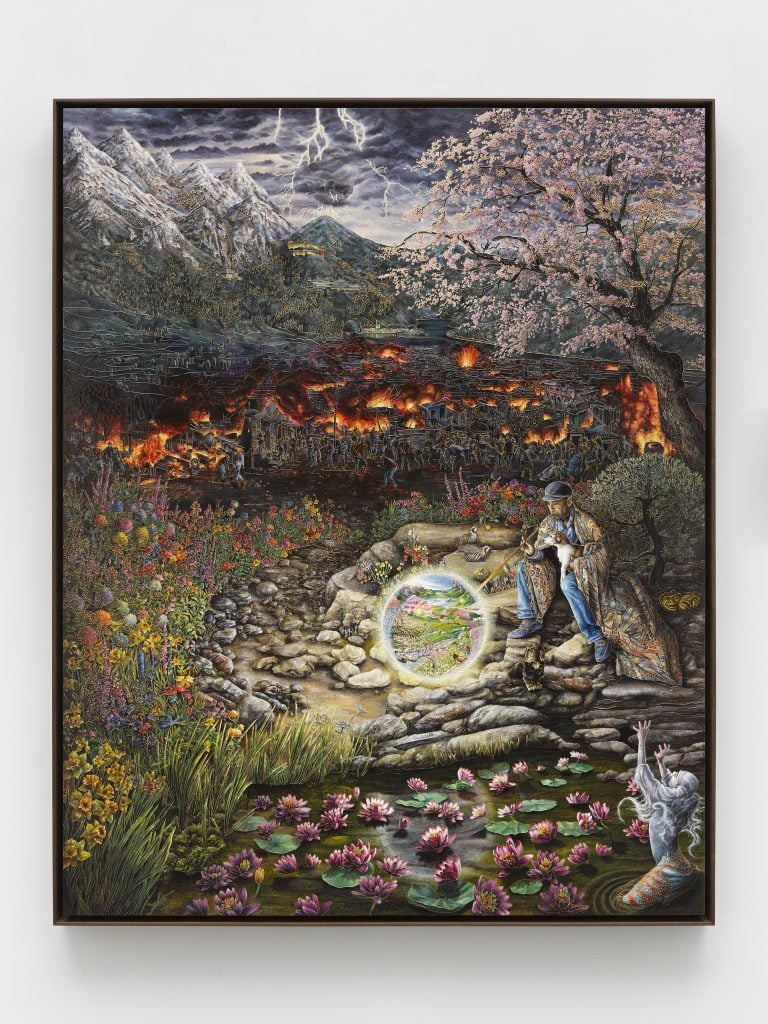
Raqib Shaw, La Tempesta After Giorgione (2019). © Raqib Shaw. Photo © White Cube (David Westwood).
Raqib Shaw has created a similarly wild refuge for himself in the middle of Peckham. Situated next to South London Gallery’s Fire Station building in a former sausage factory, Shaw’s complex features a paradisal rock garden that belies its city location. Many aspects of the garden appear in his intricate paintings, from the wooden swing that features in Summer Solitude I (2021) to the worn stones in La Tempesta (after Giorgione)(2019). While his paintings often appear to have come from the depths of his imagination, they in fact draw on references to art history and to his own luscious home.
“Everything does appear in the paintings because these are life studies,” he told Artnet News in 2022. “During lockdown I couldn’t believe it: the nurseries were still open. Within two hours’ drive, I had been to every single nursery, and it was really fabulous that I was able to compose while keeping the paintings in mind. When they all flower, they are exactly as you see in Agony in the Garden. And when they see them, everyone says, ‘That can’t be England.’ But it is England!”
Isamu Noguchi

Photograph of the Noguchi Museum garden in spring by Nicholas Knight. ©The Isamu Noguchi Foundation and Garden Museum, New York / Artists Rights Society (ARS)
The illustrious artist and landscape designer Isamu Noguchi often celebrated the line between the natural and human made. His groundbreaking sculptures brought traditional techniques together with modernist sensibilities, playing with the patterns and organic forms of plants and rocks. When he built The Isamu Noguchi Foundation and Garden Museum in Queens, New York, he created the ideal setting for his sculptures to dwell in. The museum’s rock gardens are true to his artistic vision, combining weighty sculptures with natural stones and plants native to both Japan and America – creating a connecting thread between this iconic location and his museum in Takamatsu City, Kagawa Prefecture, and a reflection of his dual heritage.
“When the time came for me to work with larger spaces, I conceived them as gardens, not as sites with objects but as relationships to a whole,” he wrote in his 1987 book The Isamu Noguchi Garden Museum. The garden began as an industrial lot, and its serene design was inspired by the clean lines of traditional Japanese gardens. Noguchi’s concept was that a stone carefully placed in nature should highlight and elevate the beauty of what was already there, instead of distracting from it. “The art of stone in a Japanese garden is that of placement,” he wrote. “Its ideal does not deviate from that of nature.” The space invites mediation and quiet contemplation, with benches, shaded spots under trees, and flowing water – an unusual experience amidst New York’s frenzied bustle. The artist passed only three years after the museum and garden opened to the public in 1985, but its form and original intensions remain.
Stefan Brüggeman
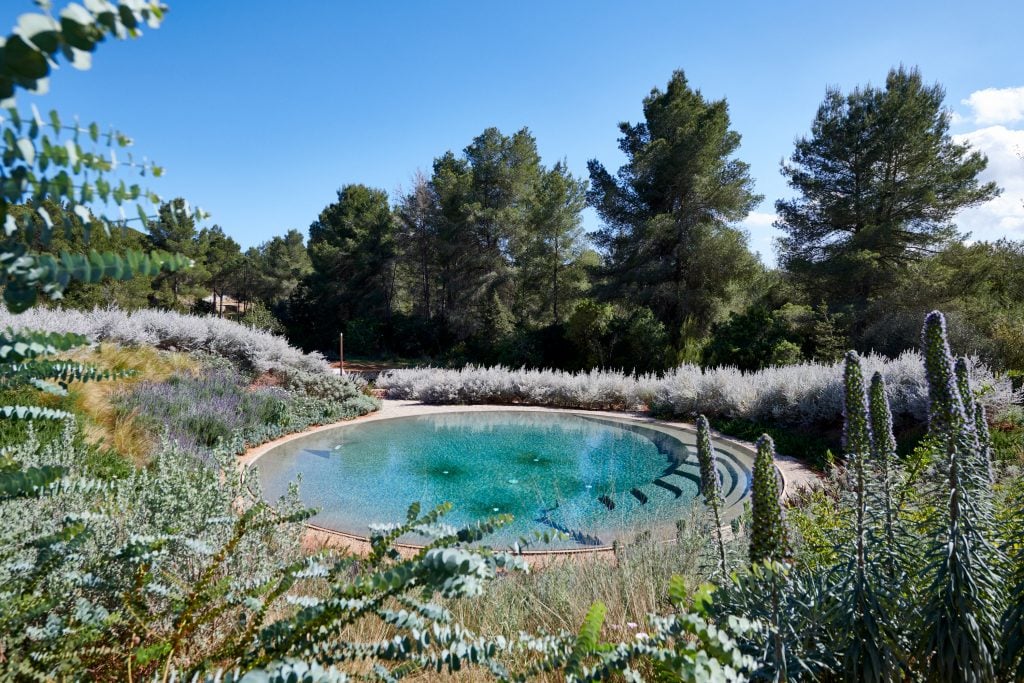
View of the pool surrounded by flora at Stefan Brüggeman’s Ibiza residency. Photo by Daniel Schäfer.
In the sunnier climes of Ibiza, Stefan Brüggeman has created a multifaceted garden around his bespoke studio. The land is built up around a sunken circular pool, creating the impression of a natural pond, with rich red earth and colors of plants developed in layers. The garden is immersive for those in the pool, and the entire design encourages a harmonious relationship between human-made structures and natural plants. The artist is known for his provocative paintings, which often explore contemporary information overload and political power. He brings what he describes as a punk attitude to gardening, working instinctively and experimentally rather than creating anything that feels too ordered.
“My work is about immediacy,” Brüggeman said in 2023. “I grasp the moment. With nature, it’s the other way around. It has been an exercise in giving up control. You can kill a plant by trying to accelerate it. I think the garden is an artwork.
“I have started around the pool and will keep extending outwards,” he says, and adds, with perhaps a touch of a punk spirit, “Maybe I will become a worse artist and a better gardener!”





